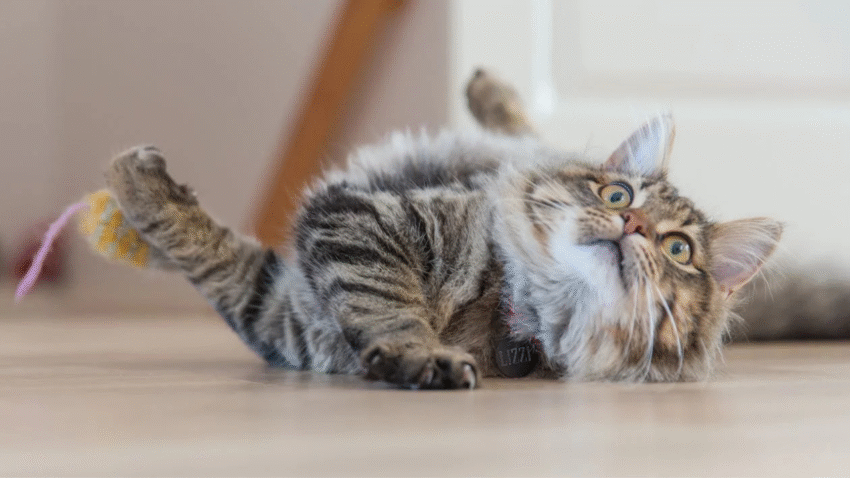Introduction
Living with more than one cat can be a joy — until the fur starts flying. Are your cats swatting, hissing, or chasing each other? Don’t worry — feline aggression is common in multi-cat households, but it can be managed and often prevented. In this guide, you’ll learn how to reduce aggression between cats in the same home with proven techniques, practical tips, and peace-restoring strategies.
Why Managing Cat Aggression Matters
Cats are territorial by nature, and while some adjust well to living with other felines, others need time, patience, and the right environment to feel secure. Aggression can cause stress, injury, and long-term behavioral issues — not just for the cats but for everyone in the home.
Understanding why aggression occurs and how to respond appropriately is key to building a harmonious multi-cat household. Whether you’re introducing a new cat or dealing with longtime residents who aren’t getting along, the right approach can make a huge difference.
Step-by-Step Guide to Reducing Cat Aggression
1. Identify the Type of Aggression
Before addressing aggression, figure out what kind you’re dealing with:
- Territorial aggression: Common when a new cat enters an established cat’s space.
- Redirected aggression: Triggered by outside stress (like a bird outside the window) but taken out on another cat.
- Fear-based aggression: Comes from anxiety, often in timid cats.
- Play aggression: Rough play that escalates, often seen in younger cats.
Understanding the root cause helps you tailor the solution.
2. Separate and Reintroduce Slowly
If the aggression is intense or recent, separate the cats completely. Give each their own space with food, water, litter box, and hiding spots. Reintroduce them slowly:
- Day 1–3: Let them sniff each other through a closed door.
- Day 4–7: Swap bedding or toys to mix scents.
- Week 2: Allow brief, supervised visits in a neutral space with treats.
Take things slowly — rushing the process can backfire.
3. Use Scent to Your Advantage
Cats rely heavily on scent to feel safe. You can reduce aggression by helping them associate each other’s scent with positive experiences:
- Rub a towel on one cat and place it near the other’s favorite sleeping spot.
- Feed both cats treats while they’re smelling items with the other cat’s scent.
4. Provide Vertical Space
Vertical territory like shelves, cat trees, or window perches gives cats more space to escape or observe from a safe height. This helps reduce conflict by allowing each cat to claim their own area.
5. Increase Resources
Prevent competition by having multiple of everything:
- Food and water bowls in separate locations
- At least one litter box per cat, plus one extra
- Multiple scratching posts and cozy sleeping spots
More resources mean less reason to fight over territory.
6. Redirect Negative Behavior
If you catch aggression brewing, distract with a toy, treat toss, or a noise (like gently clapping). Never punish the cats — this increases fear and can worsen the problem.
7. Reward Calm Interactions
Reinforce peace by rewarding calm behavior. When your cats are near each other and not fighting, offer treats or praise. This builds positive associations and encourages future cooperation.
Common Mistakes to Avoid
1. Letting Cats “Work It Out”
Cats don’t resolve fights like dogs do. Allowing them to fight it out can cause long-term fear or trauma. Always intervene safely.
2. Ignoring Early Warning Signs
Growling, hissing, tail flicking, or staring are signs a fight may erupt. Step in early with redirection or separation.
3. Failing to Provide Escape Routes
Trapped cats may lash out defensively. Make sure every room has multiple exits so no cat feels cornered.
4. Using Punishment
Yelling, spraying water, or physically intervening harshly will only increase stress and worsen aggression.
5. Introducing Cats Too Quickly
Introducing a new cat without a gradual plan is one of the biggest causes of aggression. Always follow a step-by-step introduction.
Extra Tips & Recommendations
1. Use Calming Products
Consider using pheromone diffusers like Feliway, calming collars, or sprays. These mimic natural feline scent markers and help reduce tension.
2. Engage in Interactive Play
Play helps reduce boredom and pent-up energy — two triggers for aggression. Schedule daily interactive sessions with each cat individually and together if possible.
3. Feed Together (With Distance)
Feeding side by side — at a comfortable distance — helps create a positive shared experience. Over time, you can move their bowls closer as they become more tolerant.
4. Get Both Cats Checked by a Vet
Medical issues like pain or hyperthyroidism can cause aggression in cats that were previously friendly. Rule out health problems before assuming it’s behavioral.
5. Consult a Feline Behaviorist
If aggression persists after consistent effort, a cat behavior specialist can offer custom strategies and support for long-term peace.
Conclusion
Reducing aggression between cats in the same home is all about patience, understanding, and environmental control. By identifying the cause, giving each cat their space, and rewarding calm behavior, you can restore harmony in your household. Remember — your cats don’t have to be best friends, but they can learn to live together peacefully.
🐾 Peace takes time — but with love, space, and a little guidance, your cats can learn to coexist.
